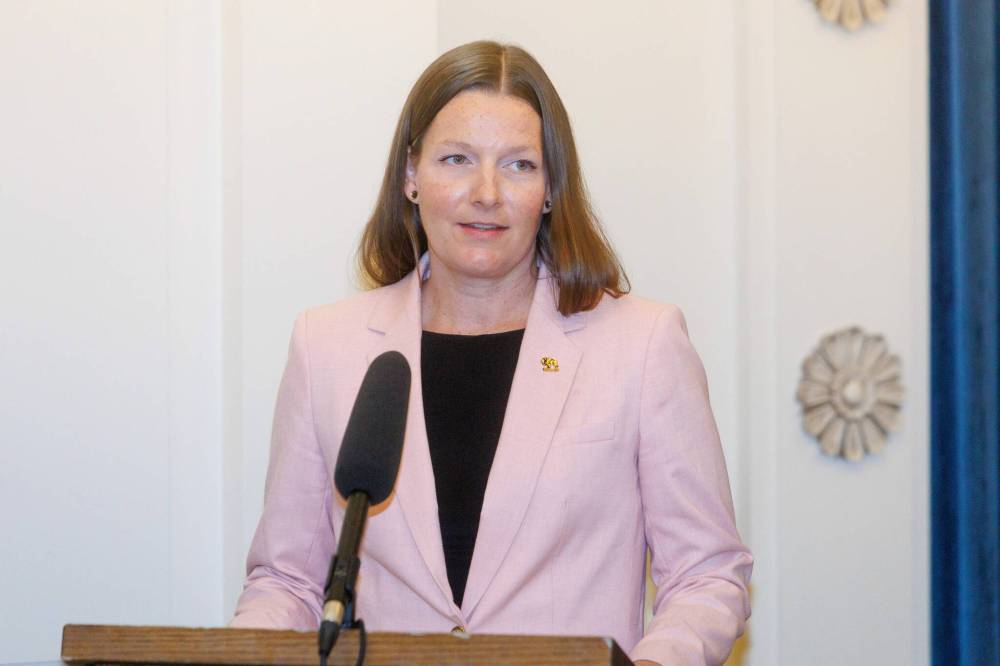It takes more than net-zero promises
Advertisement
Read this article for free:
or
Already have an account? Log in here »
To continue reading, please subscribe:
Monthly Digital Subscription
$0 for the first 4 weeks*
- Enjoy unlimited reading on winnipegfreepress.com
- Read the E-Edition, our digital replica newspaper
- Access News Break, our award-winning app
- Play interactive puzzles
*No charge for 4 weeks then price increases to the regular rate of $19.00 plus GST every four weeks. Offer available to new and qualified returning subscribers only. Cancel any time.
Monthly Digital Subscription
$4.75/week*
- Enjoy unlimited reading on winnipegfreepress.com
- Read the E-Edition, our digital replica newspaper
- Access News Break, our award-winning app
- Play interactive puzzles
*Billed as $19 plus GST every four weeks. Cancel any time.
To continue reading, please subscribe:
Add Free Press access to your Brandon Sun subscription for only an additional
$1 for the first 4 weeks*
*Your next subscription payment will increase by $1.00 and you will be charged $16.99 plus GST for four weeks. After four weeks, your payment will increase to $23.99 plus GST every four weeks.
Read unlimited articles for free today:
or
Already have an account? Log in here »
Hey there, time traveller!
This article was published 08/11/2023 (778 days ago), so information in it may no longer be current.
Long-term commitments to address the effects of climate change have become so commonplace they’ve almost polluted the political landscape.
Grand pronouncements and elaborate signing ceremonies to address greenhouse-gas levels and rising temperatures go back to the United Nations Framework Convention on Climate Change, which was signed by 154 countries, including Canada, in June 1992 at the Earth Summit in Rio de Janeiro.
Accords are agreed to and commitments set far into the future are made seemingly every time world leaders meet, whether at G7 or G20 summits or after the latest round of global negotiations on greenhouse-gas levels or net-zero emission goals.

Files
Provincial Environment Minister Tracy Schmidt says the NDP government is looking at ‘broad and ambitious’ plans to get to a net-zero electricity grid.
Canada also signed the Kyoto Protocol in 1997, but it withdrew from it in 2011 after coming nowhere near the protocol’s greenhouse-gas emission targets.
Since then, Canada has launched the 2016 Pan-Canadian Framework it developed with provinces, territories and Indigenous Peoples that sets a price on carbon and aims to reduce carbon emissions across all economic sectors.
A 2020 federal climate plan and a 2022 emissions-reduction plan set up a road map toward a 2030 emission-reduction target that is 40 per cent below the 2005 level and net-zero emission target by 2050.
Manitoba’s newly elected NDP government is considering its own environmental commitment. Premier Wab Kinew has directed Tracy Schmidt, Manitoba’s environment minister, to make Manitoba a leader in clean energy, and a net-zero emissions pledge by 2035 is one of the options the government is thinking about for its inaugural throne speech on Nov. 21.
Jay Grewal, the chief executive officer of Crown-owned Manitoba Hydro, told the Globe and Mail in August that such a target isn’t feasible, partly because of the prohibitive cost.
Schmidt, however, says the goal can be reached with new solar, wind and hydroelectric projects, the latter of which the previous government, ruled by the Progressive Conservatives, had dismissed as an option.
Unlike many climate-change commitments governments have set out for themselves and rarely met, Manitoba is already close to achieving a net-zero electricity grid, owing to Manitoba Hydro’s 16 hydroelectricity-generating stations.
Hydro power makes up 97 per cent of the province’s total electricity, and a Manitoba Hydro plan released in July included a pathway to net-zero emissions as one of its future scenarios.
One problem with tackling climate change is that climate isn’t the only thing changing on Earth; so are the people who live on it.
Manitobans are part of that change, purchasing more electrically powered automobiles every day and buying into the net-zero trend whether they realize it or not.
But every electrically powered vehicle bought in the province is another heavy electricity user, charging batteries and creating a more challenging obstacle toward the net-zero goal.
The trend away from gasoline and diesel-powered cars will continue, especially after Ottawa announced in December 2022 that all new passenger cars and light-duty trucks sold in 2035 must be zero-emission vehicles.
It will be phased in, starting with a 20 per cent requirement in 2026.
Whether or not a net-zero emissions pledge becomes provincial government policy set out in the upcoming throne speech, it will require Manitobans to buy in, both with their green actions and their greener tax dollars, to live up to the commitment.
Without citizens fully behind the government’s goal, another unfulfilled climate-promise would so easily vanish in a puff of smoke.






